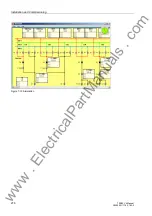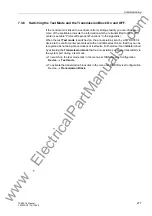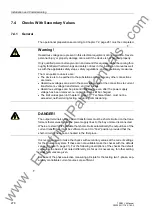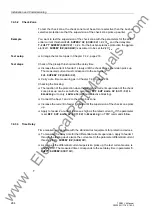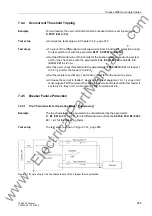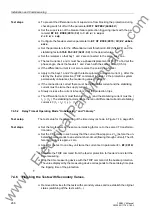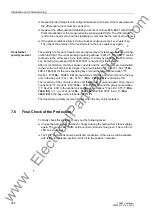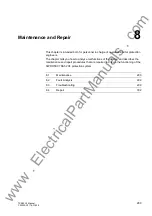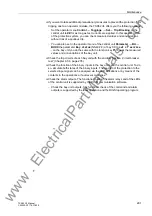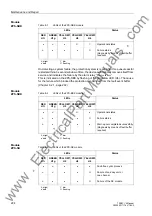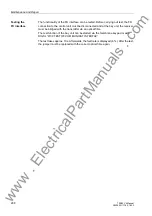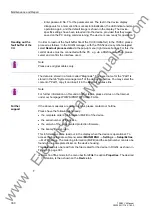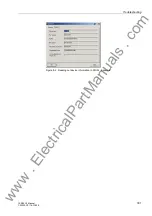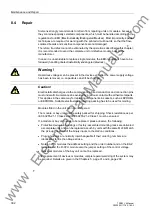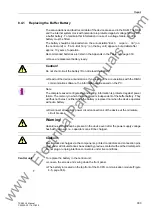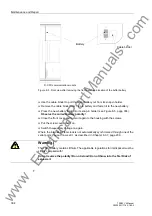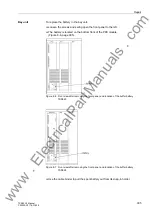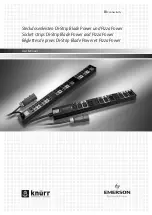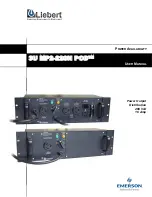
Maintenance and Repair
290
7SS52 V4 Manual
C53000-G1176-C182-3
8.1
Maintenance
All measuring and signal processing circuits of the SIPROTEC 7SS52 V4 distributed
busbar and breaker failure protection are provided with electronic components which
do not require any maintenance.
As the protection is almost completely self-monitored, from the measuring inputs up
to the coils of the trip relays, device faults are automatically annunciated This provides
for a high degree of availability of the protection system. Maintenance tests at short
intervals therefore become superfluous.
The following tests are recommended in intervals of about 5 years:
To check all measuring circuits with regard to the accuracy requirements, inject test
currents into each bay unit, their magnitude lying in the nominal current range
(selected between 0.8 and 1.2 I
N
). Make sure not to feed in any currents that might
lead to an inadvertent tripping. Feeding in higher currents is not necessary since the
complete dynamic range is monitored via internal tests.
To monitor the magnitude of the injected current value, you can read the bay current
at the central unit or the bay unit. A tolerance of up to 5 % is permissible.
Warning!
Before executing tests or maintenance works it has to be ensured that there arises no
danger for personnel and that the tests do not influence station components which are
in service.
Warning!
Hazardous voltages are present in this electrical equipment during operation. Severe
personal injury or property damage can result if the device is not handled properly.
Only qualified personnel shall work on and around this equipment. after becoming
thoroughly familiar with all warnings and safety notices in this instruction manual as
well as with the applicable safety steps, safety regulations, and precautionary
measures.
The main points to observe are:
•
The device is to be earthed to the substation earth before any other connections
are made.
•
Hazardous voltages can exist in the power supply and at the connections to current
transformers, voltage transformers, and test circuits.
•
Hazardous voltages can be present in the device even after the power supply
voltage has been removed, i.e. capacitors can still be charged.
•
The limit values given in Chapter 9, page 311 “Technical Data”, must not be
exceeded, neither during testing nor during commissioning.
Danger!
The output terminals of the current transformers must be short-circuited before the
power supply lines to the bay unit are disconnected.
Where a test switch is available that short-circuits automatically the output lines of the
current transformer, it will be sufficient to set it to “Test” position, provided that the
short-circuiters have been checked in the first place.
www
. ElectricalPartManuals
. com

